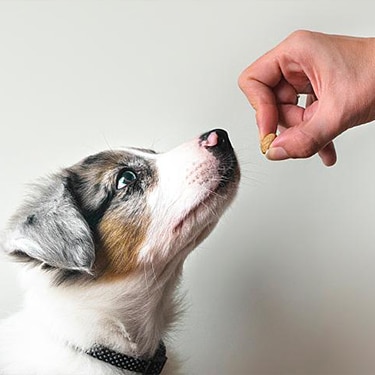
-
Find the right food for your petTake this quiz to see which food may be the best for your furry friend.Find the right food for your petTake this quiz to see which food may be the best for your furry friend.Featured products
 Adult Large Breed Chicken & Barley Recipe Dog Food
Adult Large Breed Chicken & Barley Recipe Dog FoodSupports healthy joints, lean muscle, and beautiful coat for large breed dogs
Shop Now Hill's Science Diet Adult Chicken & Beef Entrée Dog Food
Hill's Science Diet Adult Chicken & Beef Entrée Dog FoodChicken & Beef Entrée in a delicious loaf with complete & balanced nutrition to help keep adult dogs active and healthy
Shop Now Adult Chicken & Barley Recipe Dog Food
Adult Chicken & Barley Recipe Dog FoodSupports lean muscle and beautiful coat for adult dogs
Shop NowFeatured products Adult Tender No Corn, Wheat, Soy Chicken & Vegetables Stew Cat FoodShop Now
Adult Tender No Corn, Wheat, Soy Chicken & Vegetables Stew Cat FoodShop Now Senior Vitality Adult 7+ Tuna & Vegetables Stew
Senior Vitality Adult 7+ Tuna & Vegetables StewImproves Everyday Ability to Get Up & Go
Shop Now Adult Turkey & Liver Entrée Cat Food
Adult Turkey & Liver Entrée Cat FoodPrecisely balanced nutrition with the delicious taste of minced turkey & liver to help fuel the energy needs of cats during the prime of their life
Shop Now -
Dog
- Dog Tips & Articles
-
Health Category
- Weight
- Food & Environmental Sensitivities
- Urinary
- Digestive
- Joint
- Kidney
-
Life Stage
- Puppy Nutrition
- Adult Nutrition
- Senior Nutrition
Cat- Cat Tips & Articles
-
Health Category
- Weight
- Skin & Food Sensitivities
- Urinary
- Digestive
- Kidney
-
Life Stage
- Kitten Nutrition
- Adult Nutrition
Featured articles The Science Behind Our Love for Pets
The Science Behind Our Love for PetsLearn the scientific reasons why we have such strong connections with our pets, and what science says about the love between humans and our furry friends.
Read More How to Properly Mix Wet & Dry Pet Foods
How to Properly Mix Wet & Dry Pet FoodsAn Orange cat eating from a bowl filled with mixed food
Read More What Is Littermate Syndrome? Pet Adoption Guide
What Is Littermate Syndrome? Pet Adoption GuideLearn more about littermate syndrome in dogs and cats and how to successfully navigate adoption and early socialization processes.
Read More -


Controlling the noise level of your dog is an important part of being a responsible owner. After all, excessive barking can be annoying, not just for you but for your neighbours as well.
Why all the noise
The first step to managing the problem is to understand why a dog barks. Some dogs will bark to let you know they want something. Perhaps they are hungry, thirsty or just want to play.
When this becomes unreasonable, it is time to teach him other ways to attract your attention; like pawing or waiting by the door or bowl.
Playtime
Many dogs will bark when they see other dogs to invite them to come and play. This is perfectly normal, but it is up to you to decide how much barking is acceptable and make your dog wait to play until he can be quiet.
Home alone
Your dog may bark if left alone. Try leaving some music on, or playing the radio to provide familiar human noise. You can also give him some toys that require extended work and attention to keep him occupied while you're out.
A good way of reducing anxiety is to give your dog an old unwashed piece of clothing or anything that will smell strongly of his family.
Once you are home, be sure to enjoy some vigorous play and exercise with your dog. He'll have missed you and there's no better way of re-establishing the bond.


Tasty Tips
On guard
One of the most common reasons for a dog to bark is as an alarm. If your dog sees someone approaching the house he will bark to let you know. Since he sees you as the head of the pack, he will want you to investigate.
Some dogs have been bred to sound the alarm and this is a behaviour you may wish to encourage. Let your dog bark to get your attention but silence him once you are sure there is no intruder.
Stick to a system
In all aspects of dog training you need to have a system. Dogs respond to routine and this will greatly increase your chances of success. You may have already been to obedience classes with your puppy, if you didn't, then why not give it a go now? It's never too late to teach old dogs new tricks and they are great places to learn skills in handling your dog.
Hush
One way to teach your dog a 'hush' command is to silence or distract him every time he barks. Use something that makes a loud noise, like a can full of coins, to get his attention then issue a firm 'hush' command.
When your dog stops barking, praise and reward him. Never shout when you want him to stop, this can cause anxiety and undermine any learning. Also, you can easily confuse your dog if he thinks you are barking too. Yelling only reinforces the barking habit.
To summarize
Training is always the best way to correct your dog's behaviour. Remember though, that most barking is a normal part of being a dog. It is only when it becomes unreasonable and disrupting that you need to take action.
If the barking persists, your vet will be able to give additional advice and may even suggest some other techniques.
Related products

Supports healthy joints, lean muscle, and beautiful coat for large breed dogs

Chicken & Barley Entrée in a delicious loaf with great taste and precisely balanced nutrition to support 5 essential building blocks for lifelong health

Supports lean muscle and beautiful coat for adult dogs

Chicken & Beef Entrée in a delicious loaf with complete & balanced nutrition to help keep adult dogs active and healthy
Related articles

Learn how to help keep your dog's immune system in tip-top shape, including nutritional immune system support for dogs and other strategies.

Wondering where can I buy a dog? Consider adoption and explore the pros and cons of adopting a dog from a breeder versus an animal shelter.

Discover how the field of dog science is giving us more and more insights into the inner workings of our furry best friends.

Can puppies have treats? Explore best practices for giving your puppy treats to ensure you're doing so in the healthiest way possible.

Put your dog on a diet without them knowing
Our low calorie formula helps you control your dog's weight. It's packed with high-quality protein for building lean muscles, and made with purposeful ingredients for a flavorful, nutritious meal. Clinically proven antioxidants, Vitamin C+E, help promote a healthy immune system.
Put your dog on a diet without them knowing
Our low calorie formula helps you control your dog's weight. It's packed with high-quality protein for building lean muscles, and made with purposeful ingredients for a flavorful, nutritious meal. Clinically proven antioxidants, Vitamin C+E, help promote a healthy immune system.


